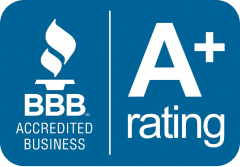
Medicare Advantage vs. Medicare Supplement Insurance Plans: Are you debating whether to get Medicare Advantage or Medicare Supplement coverage? The two types of coverage are described below.
Original Medicare (Parts A and B) covers a lot of healthcare costs, but it doesn’t cover everything. Beneficiaries are nonetheless responsible for a multitude of copayments and deductibles, which can quickly pile up even with covered healthcare services. Furthermore, many benefits, such as routine vision and dental, prescription medicines, and international emergency health coverage, are not covered by Medicare Part A and Part B. If you only have Original Medicare, you’ll have to pay for these expenses yourself.
As a result, many Medicare beneficiaries join one of two types of plans to fill in the gaps in their coverage.
Find Medicare Plans in 3 Easy Steps
We can help find the right Medicare plans for you today
Medicare Advantage vs Medicare Supplement (Medigap) insurance plans

Medicare Supplement insurance plans function in conjunction with Original Medicare, Parts A, and B, and may be used to cover expenses not covered by Original Medicare. These plans do not provide stand-alone coverage; for hospital and medical treatment, you must stay enrolled in Parts A and B. You’ll need to enroll in a stand-alone Medicare Prescription Drug Plan if you need prescription drug coverage.
You are still enrolled in Original Medicare, Parts A, and B when you purchase a Medicare Supplement insurance plan. Medicare pays for the majority of your medical bills, but a Medigap plan only covers some Medicare-mandated cost-sharing expenses like copayments and deductibles. In addition, Medigap insurance plans may be able to assist with costs that Original Medicare does not cover, such as prescription drugs.
Medicare Supplement insurance plan benefits

In most states, there are ten distinct Medigap insurance plans to choose from, each designed by a different letter (for example, Plan A). Each plan letter’s coverage is standardized, which means that no matter which insurance company you buy from, you’ll get the same basic benefits for Medicare Supplement coverage within the same letter category. Even if basic benefits are consistent across plans in the same letter group, premium pricing may differ depending on the insurance company and location. If you live in Massachusetts, Minnesota, or Wisconsin, you should be aware that these three states have different Medigap plans than the rest of the country.
Copayments, coinsurance, and deductibles are examples of out-of-pocket costs not covered by Original Medicare. Some proposals may not be feasible.
Medicare Advantage Plan Benefits

Because private insurance firms have a little more leeway when it comes to constructing Medicare Advantage plans, there are more disparities between them. This means you should compare plan possibilities more carefully to ensure you don’t neglect anything.
As previously stated, Medicare Advantage plans allow you to receive coverage for services not covered by Original Medicare. This could include regular eye and dental exams, as well as hearing and health wellness programs. Unless you have other insurance, you would normally have to pay for these procedures out of pocket under Original Medicare.
Another advantage of Medicare Part C is that many of these plans include Medicare Part D prescription medication coverage as standard. These programs, often known as Medicare Advantage Prescription Drug Plans, provide you with the convenience of having your prescription drugs covered by Medicare.
Finding Medicare providers

Any medical provider who accepts Medicare will accept Medicare Supplement insurance. Medicare Advantage plans, on the other hand, may have more limited networks, depending on the plan. Some Medicare Advantage plans, such as Health Maintenance Organization (HMO) plans, require you to use a provider network to be covered, which means you can only see doctors and hospitals who are contracted with your Medicare Advantage plan and are part of its provider network. Other plans may employ a preferred provider network that allows you to see both in-network and out-of-network providers; however, selecting non-network doctors may result in increased copayments and coinsurance.
Every circumstance is unique, so it’s critical to weigh both your Medigap insurance and Medicare Advantage plan options to get the right coverage.
| Medicare Advantage | Medicare Supplement | |
| Can make changes | Two open enrollment periods per year | One period per lifetime unless there are special circumstances |
| Monthly premium | As low as $0 | Usually has a monthly premium |
| Part B deductible | May not have a deductible | Must pay unless you got Plan C or F before January 1, 2020 |
| Part B premium | Must pay | Must pay |
| Prescription drugs | Generally covers | Does not cover |
| Routine dental, routine hearing, routine vision | May cover | Does not cover |
| Networks that restrict providers | Yes | No |
| Standardized benefits | No | Yes |
| Copayments and coinsurance | Usually has copayments and coinsurance | May cover all copayments and coinsurance |
Good things to Know
Medicare vs Medicare Advantage
It is also good to know the options available through Original Medicare, and how it compares to Medicare Advantage, and there are several areas we can look at.
Doctor and Hospital Choice
Original Medicare allows you to see any Medicare-accepting provider in the United States. You can only see physicians who are part of your Medicare Advantage plan’s network.
Original Medicare does not require specialist referrals, however, Medicare Advantage does.
Costs
Coinsurance is a requirement under Original Medicare, and you must pay 20% of the approved amount. Out-of-pocket expenditures for Medicare Advantage vary.
Part B coverage is paid for monthly with Original Medicare. You pay Part B payments with Medicare Advantage, but you may also have to pay a premium for your plan.
Original Medicare has a separate Part D medication coverage cost, although most Medicare Advantage plans include Part D.
You can get Medigap to help pay for any remaining out-of-pocket payments with Original Medicare, but you can’t buy and don’t need it with Medicare Advantage.
Coverage
Hospitals, doctors’ offices, and other healthcare facilities are covered by both Original Medicare and Medicare Advantage. Original Medicare does not cover eye exams, the majority of dental treatment, or regular checkups, although some Medicare Advantage plans do.
Original Medicare allows you to join a Medicare prescription drug plan to receive Medicare prescription medication coverage (Part D), although most Medicare Advantage plans to provide Part D coverage by default.
Foreign Travel
Original Medicare and Medicare Advantage do not normally cover care outside of the United States, but some Medicare Advantage plans may include a supplemental benefit that covers emergency and urgently needed services when traveling outside the United States.
The Cares Act of 2020
The CARES Act makes a few improvements to Medicare. The bill mandates that coronavirus vaccination be covered by Medicare Part B and Medicare Advantage plans in the same way that annual flu vaccines are. Telehealth services will also be available to Medicare beneficiaries through Federally Qualified Health Centers and Rural Health Clinics.
During a proclaimed emergency, the CARES Act mandates all Medicare and Medicare Advantage prescription drug plans to allow subscribers to receive a 90-day supply of approved medications without limits. This was previously optional, and making it mandatory will assist people with Medicare get the prescriptions they need without having to jump through unnecessary bureaucratic hoops.
Here are a few other Medicare items covered under the Cares Act:
Covid testing
Covid lab fees
Hospitalization due to Covid illness
Medicare Advantage plans are required to cover services at out-of-network facilities that participate in Medicare
Part D prescription drugs at out-of-network pharmacies when beneficiaries cannot reasonably be expected to use in-network pharmacies
FAQs
There are two forms of Medicare coverage: Medicare Advantage and Medicare Supplement. It is impossible to have both at the same time. Part A and B are frequently combined with Part D and other forms of coverage in Medicare Advantage plans. If you have Original Medicare Parts A and B, you can get Medicare Supplement insurance.
What are the disadvantages of a Medicare Advantage plan?
Medicare Advantage’s Drawbacks
- Restrictive policies may limit the services and medical providers that are covered.
- Copays, deductibles, and other out-of-pocket expenses may be greater.
- The Part B deductible must be paid by the beneficiaries.
- Health-care costs aren’t usually obvious upfront.
- The types of plans that are available vary by location.
Which is better a Medigap policy or Medicare Advantage plan?
A Medicare Advantage plan with an out-of-pocket maximum that shields you from large expenses may be a better option. Regular Medicare with a Medigap insurance plan gives you more options when it comes to where you get your care.
Can you switch back and forth between Medicare and Medicare Advantage?
During the Medicare Annual Enrollment Period, you can move from Original Medicare (Parts A and B) to Medicare Advantage (Part C) or vice versa if you already have Medicare. However, if you wish to switch, you’ll have to make some more selections.
Why is Medicare Advantage being pushed so hard?
Because of how they are sponsored, advantage programs are heavily advertised. Because Medicare compensates the carrier whenever someone enrolls, the premiums for these plans are cheap or nonexistent. Because of the money, they receive from Medicare, insurance firms benefit from encouraging membership in Advantage plans.
What is the benefit of choosing Medicare Advantage rather than the original Medicare plan?
You will receive all of the services that you are eligible for under original Medicare via Medicare Advantage. Furthermore, some MA plans cover services not included in the initial plan. Some dental, vision, and hearing services are included. Gym memberships are also covered by some MA plans.
Is Medigap the same as supplemental?
Is there a difference between Medigap and Medicare Supplemental Insurance? Yes, in Spanish. Medigap, or Medicare Supplemental Insurance, is a type of private health insurance that works in conjunction with Medicare to help you pay for your portion of medical expenses. You must get and pay for Medigap coverage on your own.
Are Medicare Advantage plans too good to be true?
According to new research by the Medicare Rights Center, Medicare Advantage plans have significant disadvantages over traditional Medicare. The Fine Print in Medicare Private Health Care Benefits: Is It Too Good To Be True?
How can Medicare Advantage plans charge no premium?
Private insurance businesses offer Medicare Advantage programs. These corporations exist to generate a profit. They must cover their expenditures in other ways in order to provide $0 premium programs. Deductibles, copays, and coinsurance are used to do this.
Do Medicare Advantage plan premiums increase with age?
How they establish the pricing has an impact on the amount you spend now and in the future. Everyone who has a Medigap policy, regardless of age, is charged the same monthly price. Your insurance premium is not determined by your age. Premiums may rise because of inflation and other circumstances, but they will not rise due to your age.







